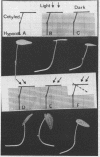Abstract
Young seedlings of Lavatera cretica L. exhibit positive phototropism. The hypocotyl perceives unilateral illumination with blue light and curves towards the light source by unequal growth. In addition, the cotyledonary laminas perceive the vectorial component of unilateral illumination with blue light and reorient normal to the beam by creating a turgor differential in their pulvini. Excision of one cotyledon resulted in negative organotropic curvature of the hypocotyl, away from the remaining cotyledon. Illumination of the cotyledonary lamina did not participate in the phototropic curvature of the hypocotyl, so long as the lamina was free to reorient to face the beam. When the lamina was continuously exposed to vectorial photoexcitation, elongation of the hypocotyl on the side carrying the cotyledon could be enhanced, or inhibited, depending on the direction of the beam striking its lamina.
Full text
PDF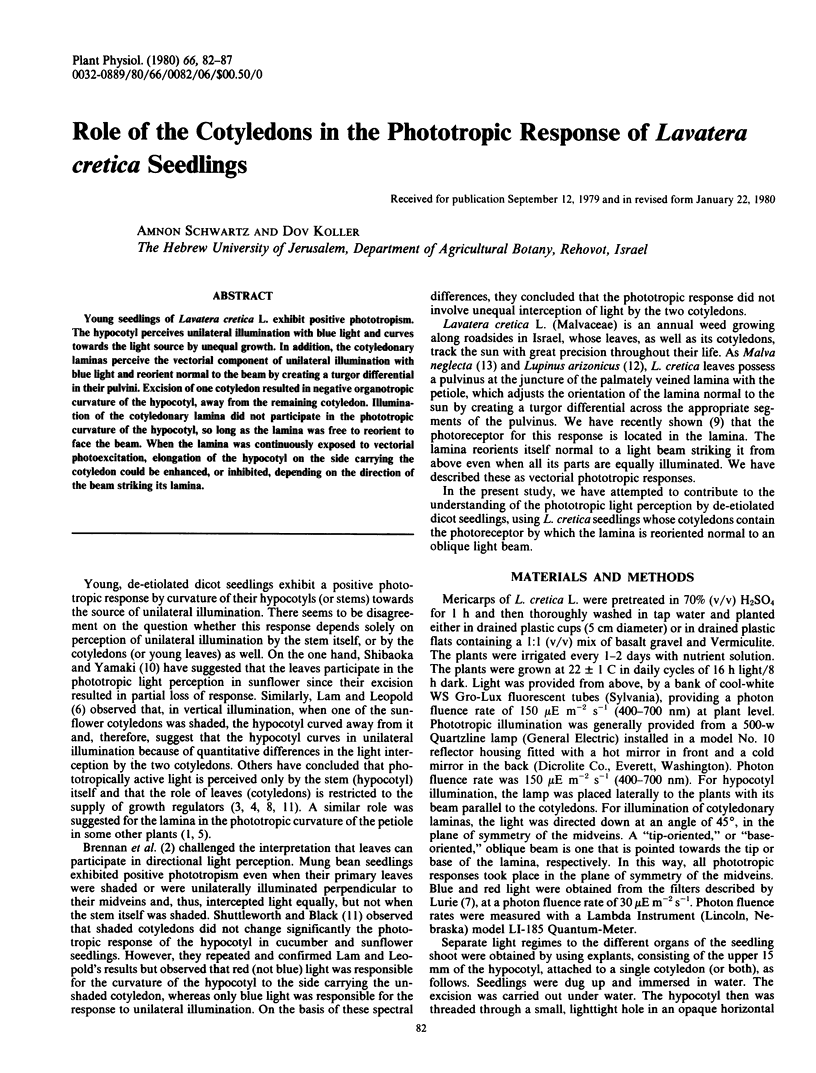
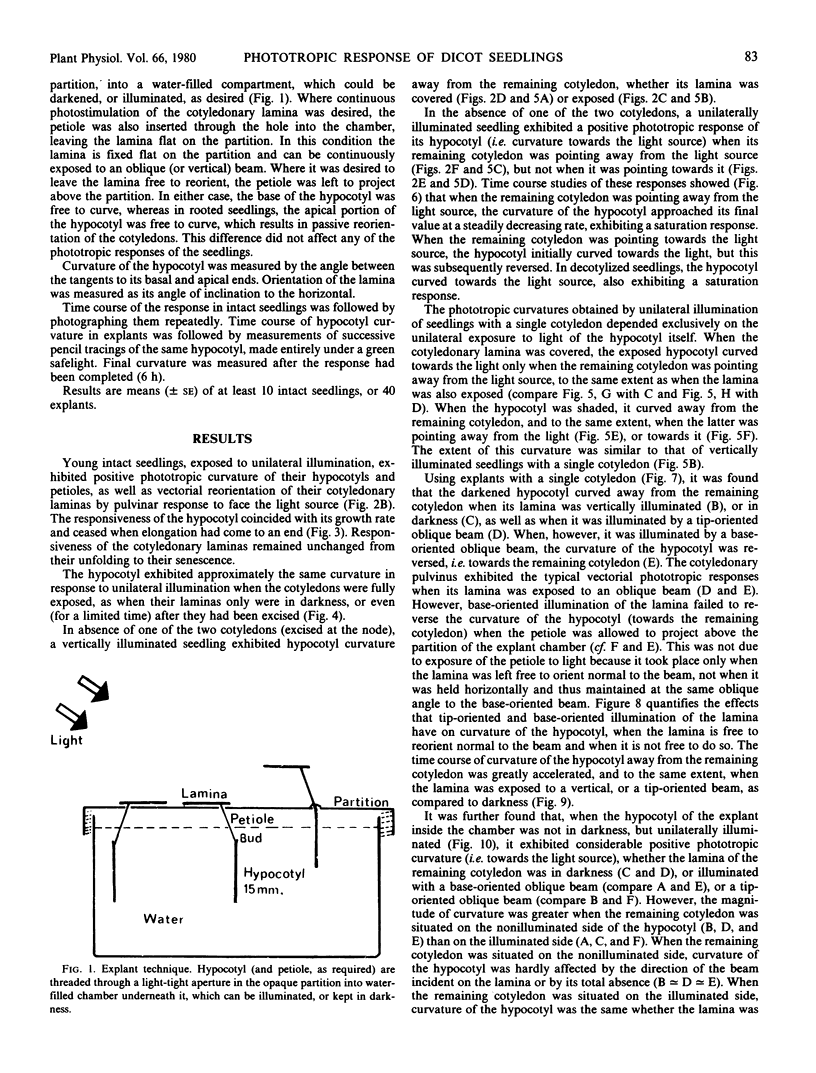
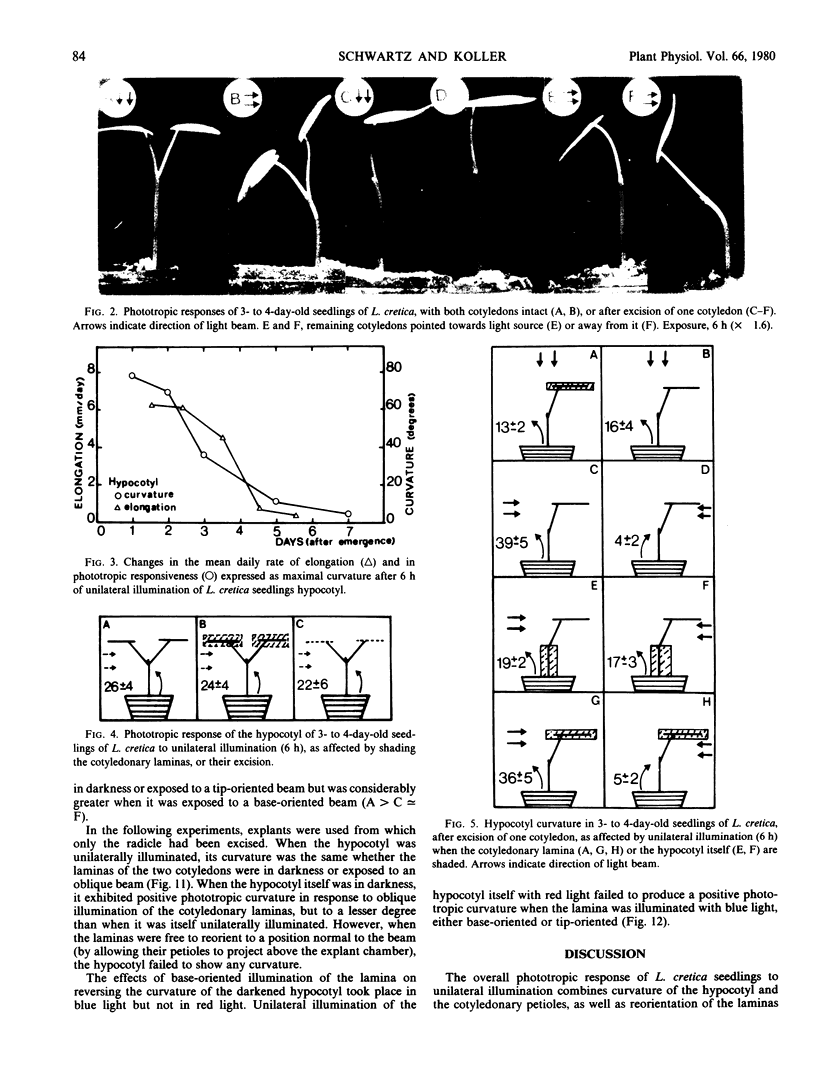
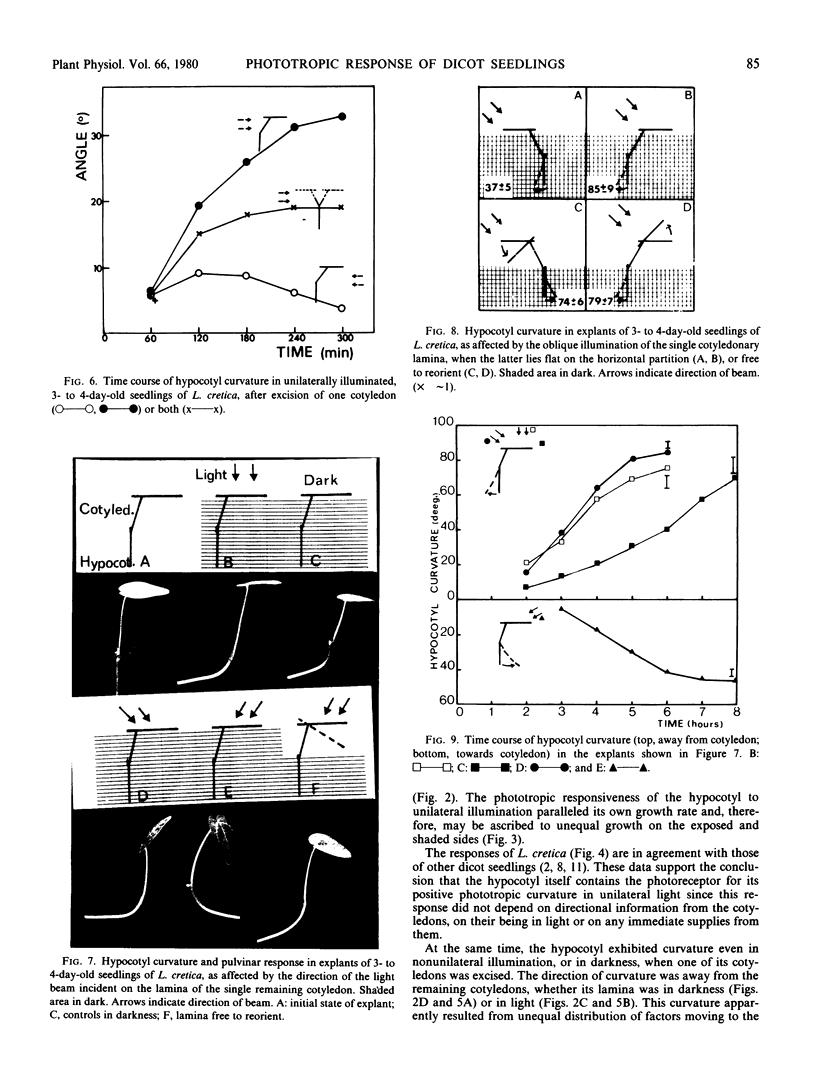
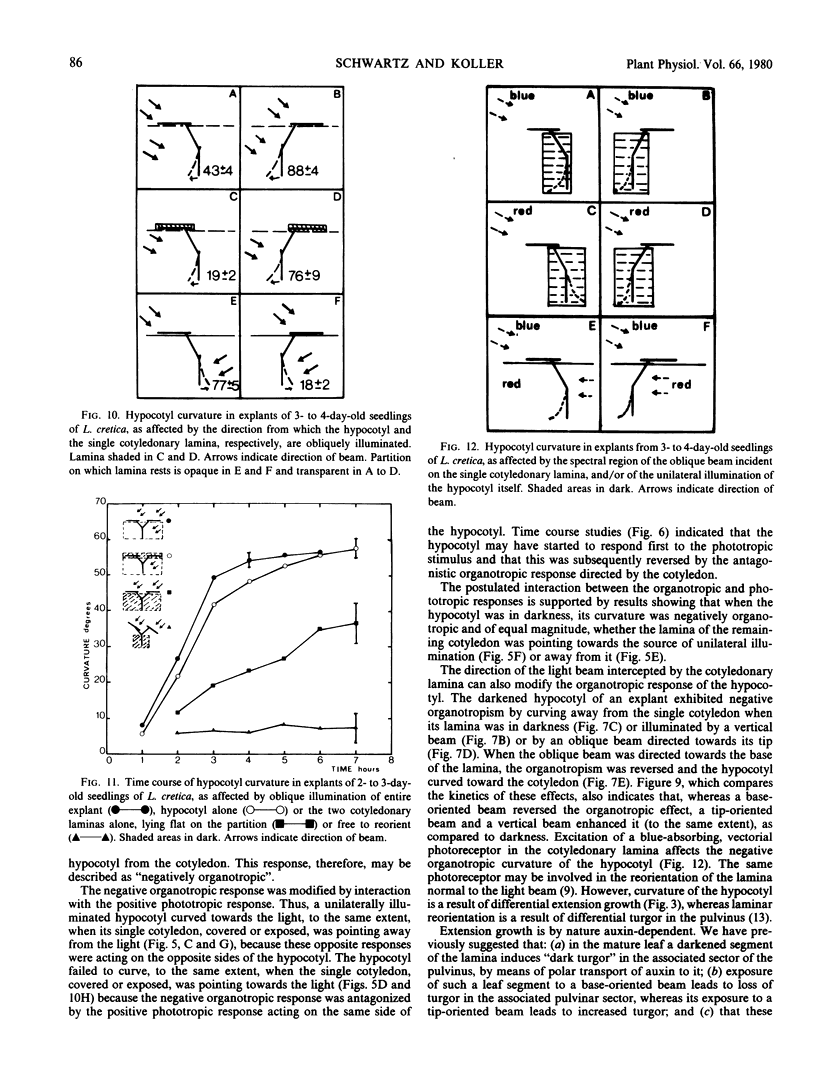
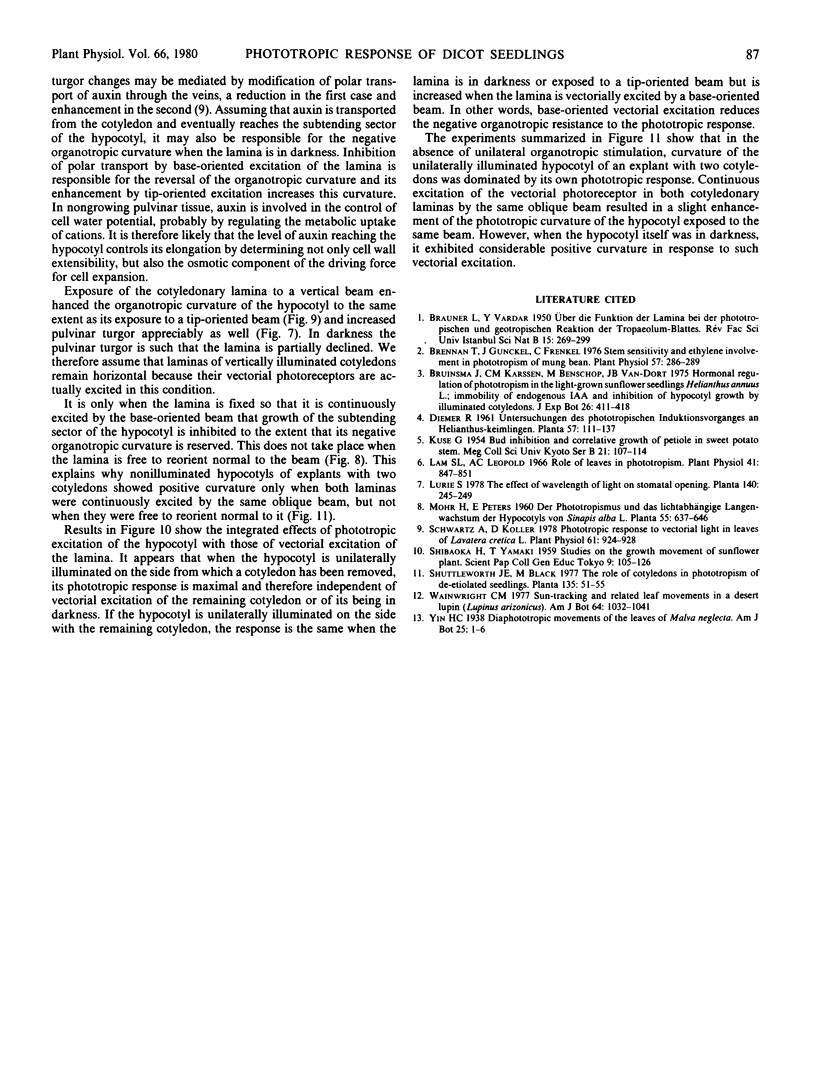
Images in this article
Selected References
These references are in PubMed. This may not be the complete list of references from this article.
- Brennan T., Gunckel J. E. Stem sensitivity and ethylene involvement in phototropism of mung bean. Plant Physiol. 1976 Feb;57(2):286–289. doi: 10.1104/pp.57.2.286. [DOI] [PMC free article] [PubMed] [Google Scholar]
- Lam S. L., Leopold A. C. Role of leaves in phototropism. Plant Physiol. 1966 May;41(5):847–851. doi: 10.1104/pp.41.5.847. [DOI] [PMC free article] [PubMed] [Google Scholar]
- Schwartz A., Koller D. Phototropic Response to Vectorial Light in Leaves of Lavatera cretica L. Plant Physiol. 1978 Jun;61(6):924–928. doi: 10.1104/pp.61.6.924. [DOI] [PMC free article] [PubMed] [Google Scholar]




